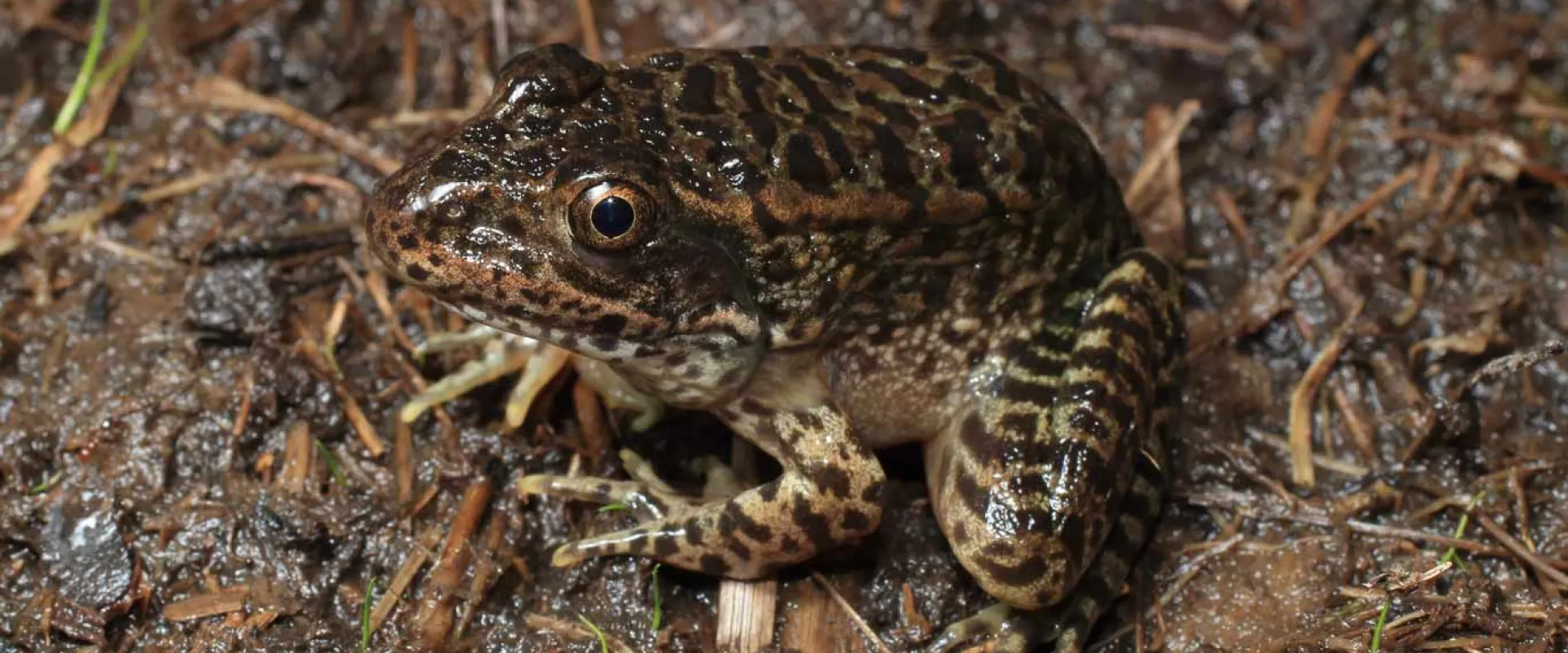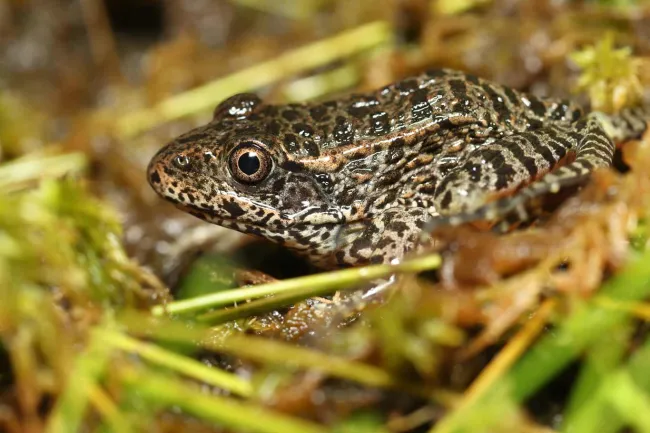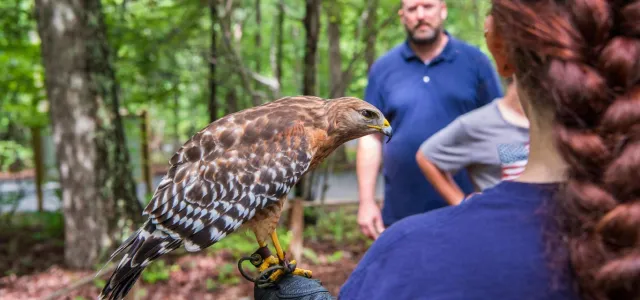About:
Did you know gopher frogs get their name from the gopher tortoise burrows that they use? Learn more about gopher frogs here.
Care & Wellness:
Biggie, Miles, and Blaze are ambassador gopher frogs all raised from the “head start” program at the North Carolina Zoo. They are weighed every other week by their caretakers and fed 2 to 3 times per week based on maintaining their healthy weights!
Behavior:
- Gopher frogs produce a low call, typically for attracting mates, which can be made both underwater or on land, and sounds like a snore or a low-pitched growl.
- This species shares the same burrow as other burrowing species, taking advantage of the moist, dark areas where they won’t dry out and are safer from predation.
- Gopher frogs are nocturnal, leaving the burrow and from underneath the sand or dirt piles at night to search for food or mates.
- Mostly invertebrates- like worms, beetles, crickets, spiders, and other insects are on the hunting menu for gopher frogs, as well as other, smaller frogs sometimes.
- They have been noted to travel up to 1.2 miles during breeding season to wetland habitats, where the males will wait in flooded ponds for females to enter and lay their eggs.
Endangered Status
- Extinct in Wild (EW)
- Critically Endangered (CR)
- Endangered (EN)
- Vulnerable (VU)
- Near Threatened (NT)
- Least Concern (LC)
- Not Evaluated (NE)


